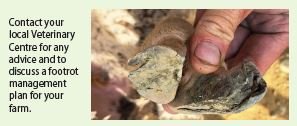Winter Footrot Management
/With the warm and moist conditions we had over late autumn we’ve seen an increased amount of footrot in flocks. However the drop in temperature over winter means a decreased spread of infection from sheep to sheep, hence an opportunity to control the level of infection in your flock before we head into the spring high challenge period.
Scanning/ shearing are great times to assess and manage the spread of footrot in your flock;
Tip sheep and examine type and stage of infection also ruling out other causes of lameness such as abscesses, frosted mud burn.
Remove and treat infected sheep. Treatment options include:
Tenaline (ACVM A007843) or Tilmovet antibiotics (ACVM A011195) - get in touch with your vet to discuss options. For mild early-stage infections Tetravet (blue) spray may do the job. Dave has been experimenting with a “new spread-phase brew” that has shown promise if anyone is interested…
The “clean” mob can be foot-bathed which will cure grade 1-3 lesions. Ensure sheep are standing in the bath for at least 15 minutes if any under-run type footrot is present.
Put the “clean” mob onto pasture that hasn’t been grazed by sheep in the past 4 weeks.
Re-inspection of the “clean” mob is best practice, but difficult to achieve at this stage of the production cycle. So aiming for one last crack at removing footrot from the mob is the best you can do.
Foot work can be a time consuming process but getting on top of the infection in your flock whilst it’s not spreading is a great opportunity to reset the clock on your flocks footrot status. Often management programmes tend to start at the height of an outbreak when the disease is already spreading, but intensive effort when the number of new infections are at their lowest will have the best success.
Vaccination
Footvax will reduce the amount and severity of footrot during the high challenge periods by approximately 50% depending on the season. Protection from the booster lasts for 2-4 months (less for fine wool, more for strong wool breeds), therefore timing’s important so immunity is highest over spring when the challenge is greatest. For first time users, a sensitiser shot will be required at least 6 weeks before the booster shot.
1st time users: June/ July sensitiser and 6 weeks later booster dose
Annual users: timing varies from farm to farm depending on risk period, pre lamb shearing and tailing are common times to give a booster shot
Don’t vaccinate within one month of lambing.



